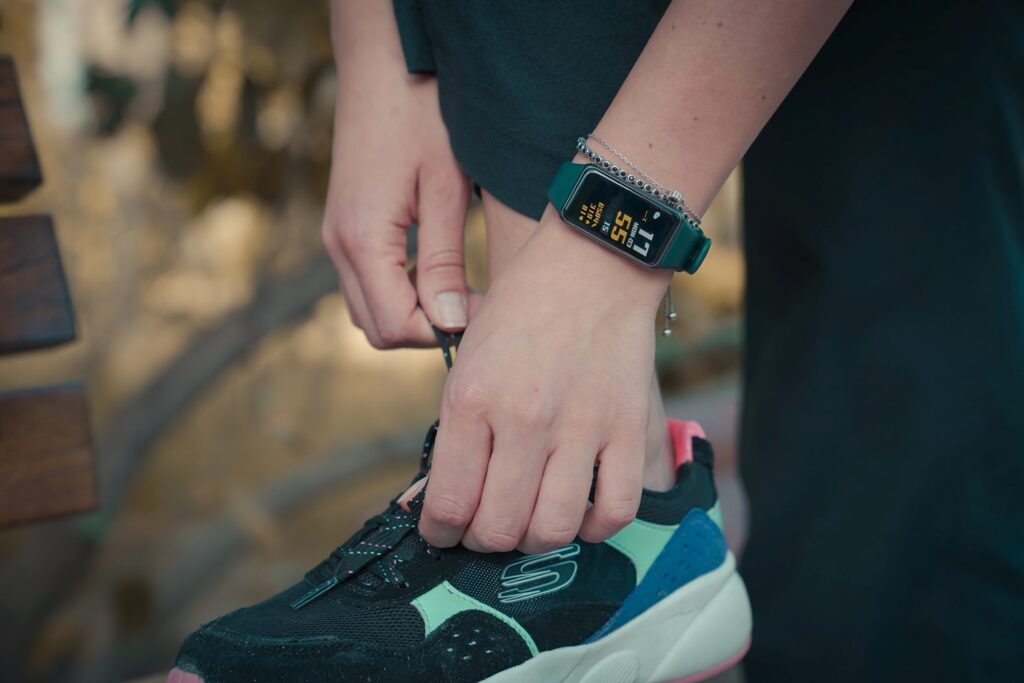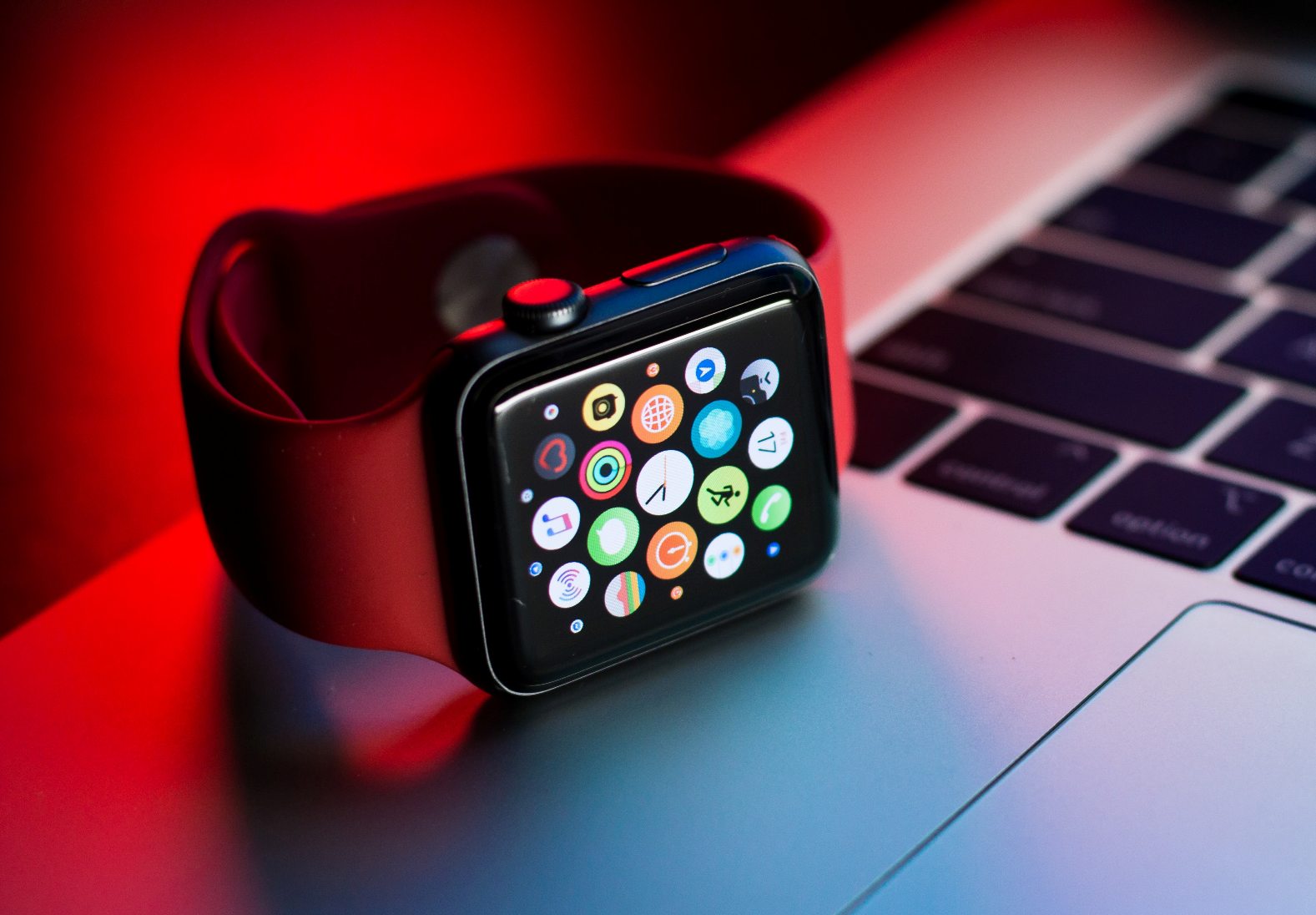Until recently, fitness trackers and smartwatches were clearly separated. There were fitness trackers and smartwatches, both of which had bands with sensors and sent data to your smartphone. Fitness trackers and smartwatches were wrist-bound devices for checking texts, emails, and even social media. However, in recent years, the two devices have become more similar.
Wearables like fitness trackers and smartwatches became more advanced as they added screens and the ability to show smartphone notifications. There are no more fitness trackers from the old guard like Jawbone and Pebble. The Apple Watch, which is the most popular fitness tracking device, is actually a smartwatch.
It’s worth noting that basic fitness (also known as activity bands) like the Fitbit Inspire 2 or Garmin Vivosmart 4 are preferable to smartwatch models like the Apple Watch or the Garmin Forerunner because of their various features.
Table of Contents
Smartwatches At-a-Glance
A smartwatch resembles a traditional watch in appearance but differs in that it lacks a mechanical movement. In place of mechanical gears, a smartwatch utilises a processor and touchscreen to display the time. When compared to traditional wristwatches, smartwatches can provide a lot more information than just the time.
While smartwatches can function on their own, they are frequently used in conjunction with a smartphone. Emails, texts, and phone calls will appear as notifications on your smartwatch’s display if it is linked to your phone. You could also listen to music or look through photos that were stored on your phone.
These devices can work just as well without a phone as they can with one. Some models can connect to the internet without a phone and have their own battery.
Be aware that smartwatches’ functionality varies from brand to brand and product to product. Others include built-in cameras and even SIM card compatibility. By using the device to take photos and accept phone calls, users can now do both tasks simultaneously.
Smartphones aren’t the only devices that smartwatches can connect to. A lot of the functionality found on these wearables isn’t normally found on smartphones. When compared to the map apps on your phone, they can be superior GPS trackers. They can also track your walking distance, pace, sleep duration, and even heart rate.
Smartwatches, of course, also function as timepieces. Like digital watches, these gadgets have digital time-reading interfaces. However, users of more recent devices have the option of downloading watch faces. Classic watch faces can be downloaded so that the smartwatch appears to be a traditional timepiece to the wearer. Digital watch faces, on the other hand, give users a more futuristic appearance.
Fitness Trackers At-a-Glance
When compared to smartwatches, fitness trackers are much more specialised in what they can do. Fitness trackers, like smartwatches, can be linked to your phone via an app. Fitness trackers, on the other hand, are made with one purpose in mind: keeping tabs on your health.


Fitbits and other fitness trackers come with a variety of tools for keeping tabs on your health and fitness levels.
It’s not uncommon for fitness trackers to display time and notifications from the phone on their faces, much like smartwatches do. Most fitness trackers come with a slew of health and exercise-related features, so know what to expect before you buy one.
When comparing fitness trackers to smartwatches, fitness trackers have smaller screens and a slimmer design.. They’re also usually resistant to perspiration. If you’re going to work out in the gym or outside, make sure you’re wearing them. Consequently, smartwatches are expected to offer more specialised features.
Comparing Smartwatches and Activity Trackers
Most customers point out that smartwatches and fitness trackers have overlapping features that make them look similar. The design is by far the most visible of these factors. Both devices have a wristwatch-like design and can be worn in the same manner. Some smartwatches and fitness trackers look almost exactly the same, which is not uncommon.
As well as tracking and data collection, both gadgets may have similar features. Aside from that, they have features like heart rate monitors, calorie counters, and sleep trackers. Both gadgets are equipped with advanced GPS tracking capabilities to keep tabs on your whereabouts.
A similar approach is used for fitness trackers as well as smartwatches. The touchscreens on both devices serve as the devices’ user interfaces. Users can change the touchscreen’s appearance by downloading new “faces.” The screen’s dimensions will differ from brand to brand. Manual controls are common on smartwatches and fitness trackers.
Differences Between Smartwatches and Fitness Trackers?
The gadgets are very similar in terms of appearance and functionality, but there are some significant differences between them. As a result, here’s how they sum up: In contrast to smartwatches, which are made to communicate, fitness trackers are made to monitor and collect data.
A smartwatch’s primary purpose is to make communication easier. With a smartwatch, you can check your emails, texts, or at the very least get alerts by simply looking at your wrist. Users who own a smartwatch with a SIM card can also make phone calls with it.
Apps for health monitoring and fitness tracking are available on smartwatches. However, these features are in addition to the ones that help with communication. Contrary to this, fitness trackers aren’t designed with the goal of facilitating communication. However, users will not be able to receive notifications from fitness trackers unless they choose a specific brand.
Fitness trackers, as opposed to smartwatches, typically include additional health and location monitoring features. Most smartwatches lack the GPS tools found in fitness trackers from well-known brands like Garmin.
Additionally, the two devices may be built in a different way. Smartwatches are available in a wide range of styles and sizes. Depending on your taste, you may prefer a smartwatch that has a classic look or a more contemporary design. There aren’t many design options for fitness trackers. A slimmer profile makes them more comfortable to wear for extended periods.
Smartwatches do more
For the most part, the only distinction is the number of capabilities and features offered by each. Most smartwatches have heart rate sensors and built-in GPS for more accurate health tracking, as well as coaching and specific workout tracking, which only the most advanced fitness trackers have. For example, most smartwatches have heart rate sensors and built-in GPS for more accurate health tracking.
In addition to music control and built-in Bluetooth (to connect to wireless headphones), smartwatches have built-in microphones for calls and voice assistants, as well as near-field communication (NFC) for payments while on the go. Additionally, cellular models are available, allowing them to function without a smartphone. Fitness trackers can have some of these smart features and capabilities, but in general they are much less versatile than other types of wearables, such as watches.
In terms of fitness trackers as a whole, the battery life is by far the most important feature. As a result of their bright displays and higher power requirements, smartwatches typically have shorter battery lives. When it comes to fitness trackers, the Apple Watch (any model) and Fitbit Inspire 2 (or Garmin Vivosmart 4) have short battery lives and require charging on a daily basis.
Smart bands are cheaper
The primary selling point of fitness trackers is their small size compared to smartwatches. Because watches are big and bulky, many people prefer not to wear them. However, they still need something to track their steps and tell them how many calories they have burned. Because they have smaller displays and are lighter, these devices are better for sleeping with.
Smartwatches start at around $200 and go up from there. To put it in perspective, the Fitbit Versa 2 costs $200, while the Apple Watch Series 3 costs $199. But the price of a smartwatch can rise dramatically if you want one with fitness-focused features, or if you want it to be a cellular model. As an illustration, a rugged smartwatch like the $600 Garmin Forerunner has advanced running-specific features. Apple Watches made of more expensive materials, such as titanium or ceramic, are available but they cost considerably more than $1,000.
Fitbit Inspire 2 ($70) and Garmin Vivosmart 4 ($92+), for example, are more expensive than the majority of popular fitness trackers.
Comparison of Smartwatches and Fitness Trackers
Battery life
Smartwatches typically require charging on a daily basis. In other words, if you forget to charge your watch one day, you’ll wake up to a dead watch the next. On the other hand, the battery life of smart bands is about 6-7 days.
Depending on usage, some bands, such as the Xiaomi Mi Band 2, can last up to 20 days. Another thing to consider is that among the fundamental requirements, sleep tracking is a must. Even so, if your smartwatch is charging at night, you won’t be able to keep tabs on your sleep. The smart bands, then, have the upper hand.
Comfort
It is much more comfortable to wear a smartband instead of a smartwatch because the former is much lighter. Personally, after wearing a smart band for about 6-7 days, I don’t even notice that I have anything on my wrist anymore. To become habitual with wearing a smartwatch every day, it will take you about a month.
Notifications
Smartwatches have awesome TFT/OLED displays, which deliver notifications and other communications in richer ways, while most smart bands use monochrome LCDs. Multi-touch support is also available on some smartwatches, which enhances the overall user experience. When using a smartwatch instead of a smart band, interacting with the device is much smoother and more pleasant.
Water resistance
Smartwatches and smart bands are both water resistant to IP64 or IP68, but if the leather straps that come with smartwatches are repeatedly exposed to water and moisture, they will lose their texture and become unusable. When it comes to water splashes, silicone or similar materials are commonly used in wristbands.
Price
Smartwatches, as you might have guessed, are quite pricey. Though cheaper smart devices are launched every other week because of competition, cheaper smartwatches later prove to be a waste of money when considering the fact that well-known companies offer budget-oriented smart bands that are truly reliable.
Which One Is the Best Option?
Consider why you require a wearable device. If you want to keep tabs on your vitals while working out, a fitness tracker is the way to go. If you’re always on the go and want to stay connected, consider investing in a smartwatch. Choosing between a smartwatch and a fitness tracker comes down to personal preference and how much you value each of these features.
Smartwatches are a good option for those who want to look good while doing it. Elegantly designed high-end smartwatches make the gadgets appropriate for formal wear. The majority of fitness trackers have boring, sweat-resistant plastic casings.
There are respectable crossbreeds on the market. Many of the features of low- to mid-range smartwatches and fitness trackers overlap. However, in the end, you should go with the product that best suits your requirements as well as your budget.


